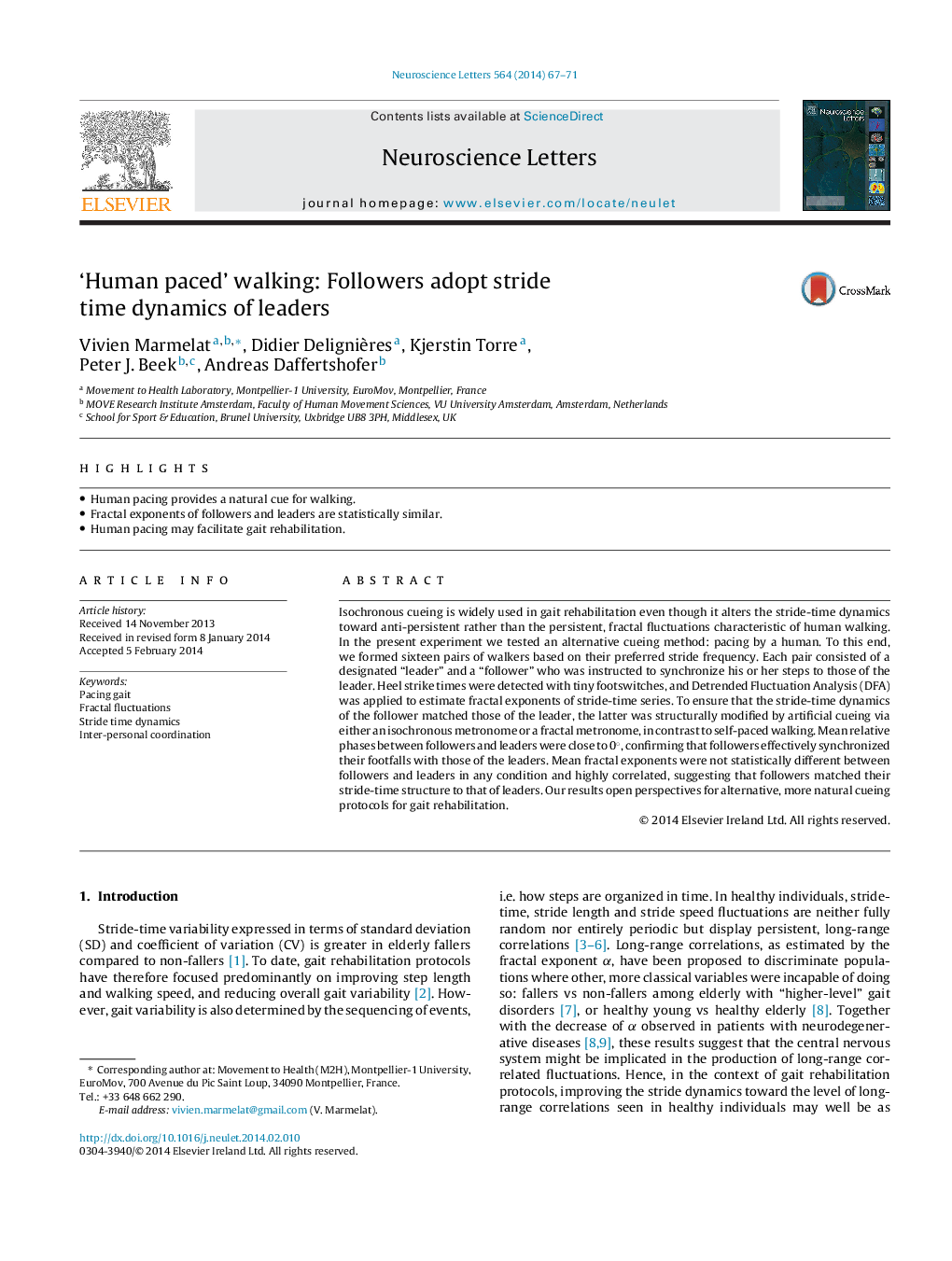| کد مقاله | کد نشریه | سال انتشار | مقاله انگلیسی | نسخه تمام متن |
|---|---|---|---|---|
| 6282242 | 1615135 | 2014 | 5 صفحه PDF | دانلود رایگان |
عنوان انگلیسی مقاله ISI
'Human paced' walking: Followers adopt stride time dynamics of leaders
ترجمه فارسی عنوان
پیاده روی "گام های انسانی": پیروان شیوه های گاه از رهبران را اتخاذ می کنند
دانلود مقاله + سفارش ترجمه
دانلود مقاله ISI انگلیسی
رایگان برای ایرانیان
کلمات کلیدی
قدم زدن، نوسانات فراکتال، دینامیک زمان استراحت، هماهنگی بین فردی،
موضوعات مرتبط
علوم زیستی و بیوفناوری
علم عصب شناسی
علوم اعصاب (عمومی)
چکیده انگلیسی
Isochronous cueing is widely used in gait rehabilitation even though it alters the stride-time dynamics toward anti-persistent rather than the persistent, fractal fluctuations characteristic of human walking. In the present experiment we tested an alternative cueing method: pacing by a human. To this end, we formed sixteen pairs of walkers based on their preferred stride frequency. Each pair consisted of a designated “leader” and a “follower” who was instructed to synchronize his or her steps to those of the leader. Heel strike times were detected with tiny footswitches, and Detrended Fluctuation Analysis (DFA) was applied to estimate fractal exponents of stride-time series. To ensure that the stride-time dynamics of the follower matched those of the leader, the latter was structurally modified by artificial cueing via either an isochronous metronome or a fractal metronome, in contrast to self-paced walking. Mean relative phases between followers and leaders were close to 0°, confirming that followers effectively synchronized their footfalls with those of the leaders. Mean fractal exponents were not statistically different between followers and leaders in any condition and highly correlated, suggesting that followers matched their stride-time structure to that of leaders. Our results open perspectives for alternative, more natural cueing protocols for gait rehabilitation.
ناشر
Database: Elsevier - ScienceDirect (ساینس دایرکت)
Journal: Neuroscience Letters - Volume 564, 3 April 2014, Pages 67-71
Journal: Neuroscience Letters - Volume 564, 3 April 2014, Pages 67-71
نویسندگان
Vivien Marmelat, Didier Delignières, Kjerstin Torre, Peter J. Beek, Andreas Daffertshofer,
